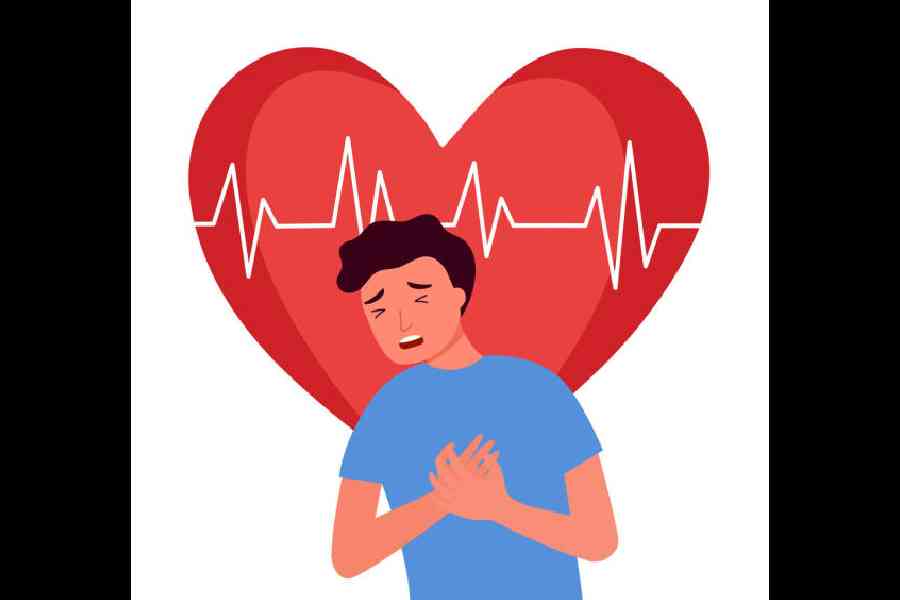As the market for leadless pacemakers grows in India, doctors point out definite advantages of the technology for heart disease patients but also call for more data and analyses on its long-term effects.
At the same time, researchers have written about the lack of a national registry tracking pacemaker implants, including conventional ones.
A pacemaker helps a heart patient control an irregular heartbeat.
In November, Abbott, the US-based healthcare and medical devices company, introduced the AVEIR VR single-chamber ventricular leadless pacemaker in India for treating patients having slow heart rhythms.
The device has been approved by the Central Drugs Standard Control Organization, Abbott said in a statement.
The AVEIR VR device is implanted directly into the heart's right lower chamber (ventricle) through a "minimally invasive, catheter-based procedure from the groin", thereby requiring no surgical cuts to the chest or wires, it said.
Doctors consider a 'leadless' pacemaker an advancement over a conventional wired one, which has been commonly associated with infections.
"A leadless pacemaker offers a powerful option for the treatment of people with cardiac arrhythmias or irregular heartbeats. Leadless pacemakers address known complications associated with traditional pacemakers," Dr Balbir Singh, group chairman-Cardiac Sciences, Pan Max, and chief of Interventional Cardiology and Electrophysiology at Max Hospital, Saket, said in the statement.
Dr Singh, who recently implanted the AVEIR VR device in a 74-year-old woman, explained that the patient "came in a bad shape with a conventional pacing that had got badly infected".
"She was running a high fever and was septic. There were vegetations (infections) on the valves of the heart. The leads, which reach the heart via valves, were infected and with them, the valves. The situation called for urgent intervention," he told PTI.
He added that the pacemaker causing trouble was removed surgically and the leadless device implanted, following which the patient is now going about her daily life.
Dr Ajay Kaul, chairman of Cardiac Sciences at Fortis Hospital, Noida, said the technology has definite advantages as the leads or wires in conventional pacemakers increase the chances of infection.
"Most of the complications with conventional pacemakers were because of the leads -- they go to the heart via the tricuspid valve, where they can cause regurgitation (backflow). These problems are not present with a leadless pacemaker," he told PTI.
However, even as patients with a high risk of infection are likely to benefit from leadless pacemakers, being a "new technology", there are concerns, especially those related to its long-term effects, according to Dr Kaul.
Research from around the world has documented high success and safety rates, suggesting the leadless device's promise in the field of cardiac pacing, while also calling for clinical trial data to confirm the perceived advantages.
Researchers from the UK's Royal Stoke University Hospital reviewed 18 studies that looked at almost 2,500 patients implanted with a leadless pacemaker and found that success rates ranged between 95.5 and 100 per cent. The results were published in 2022 in the Indian Pacing and Electrophysiology Journal.
Another trial, titled 'LEADLESS II', that enrolled 200 patients from across the US, Canada and Europe found that the implant success rate was about 98 per cent, with a safety (no complications) of 96 per cent.
"The most frequent complications were three cases of cardiac tamponade and three premature deployments," the authors, including those from the Mount Sinai Hospital in the US, wrote in the study published in the Journal of the American College of Cardiology (JACC): Clinical Electrophysiology.
Cardiac tamponade can be life-threatening and occurs when excess fluid or blood fills the 'pericardium sac' surrounding the heart, preventing the organ from filling and functioning properly.
While the technology "shows promise in the field of cardiac pacing", researchers from Emory University's School of Medicine in the US called for more clinical data.
"As this technology continues to mature, randomised clinical trials comparing this technology to traditional transvenous pacemakers are needed to confirm or refute the perceived advantage of this technology," the authors wrote in a 2018 review article published in the Journal of Geriatric Cardiology.
Meanwhile, researchers from India pointed out a lack of national data on pacemaker implants, including conventional ones.
"More than 20,000 pacemakers are implanted each year in India and the numbers are growing annually. Despite this, there is no national registry in India that collects or tracks data of implanted devices," the authors from Bengaluru's Sri Jayadeva Institute of Cardiovascular Sciences and Research wrote.
The 2018 study, which examined the profiles of heart patients undergoing pacemaker implants at the tertiary care centre between 1999 and 2014, was published in the Journal of Clinical and Diagnostic Research.
"We need long-term data before we can fully rely on leadless pacemakers," Dr Kaul said. "Although some data is available, which has justified the use of this technology, more evidence is needed, particularly regarding its safety." Other leadless pacemakers available in India are Micra AV, developed by Medtronic, a medical device company headquartered in the US and Ireland, and Abbott's Nanostim.
Except for the headline, this story has not been edited by The Telegraph Online staff and has been published from a syndicated feed.











